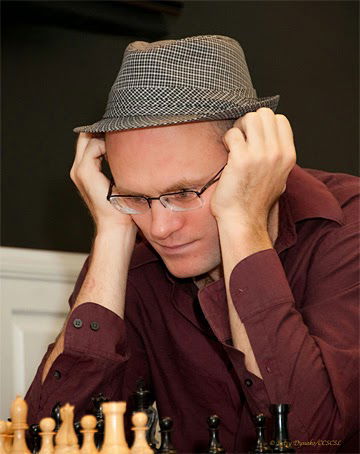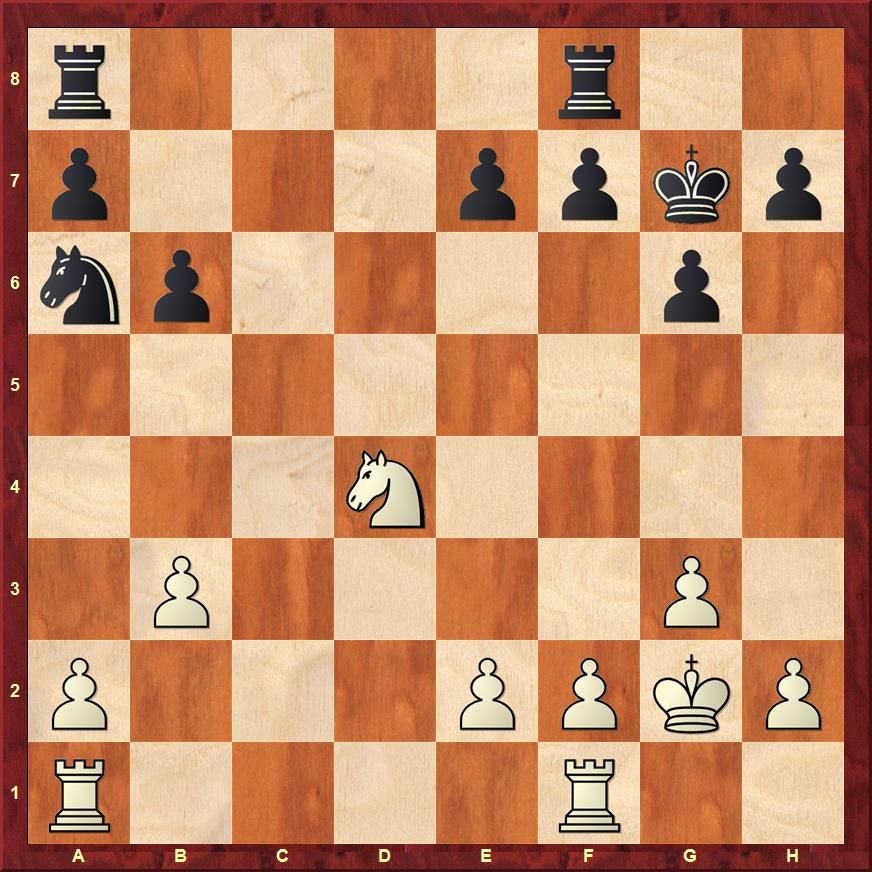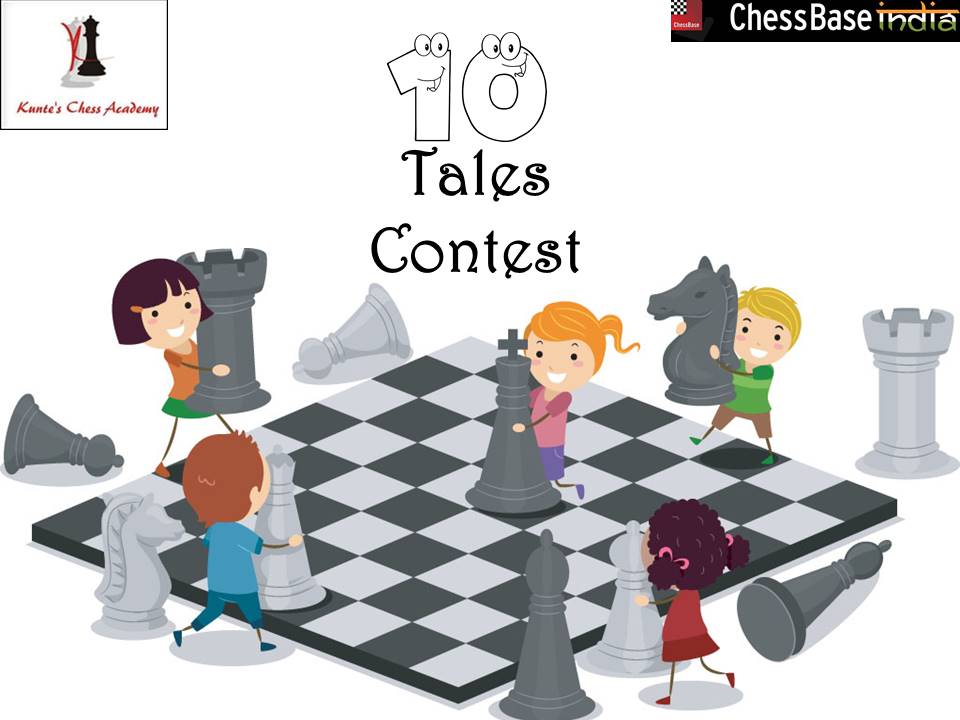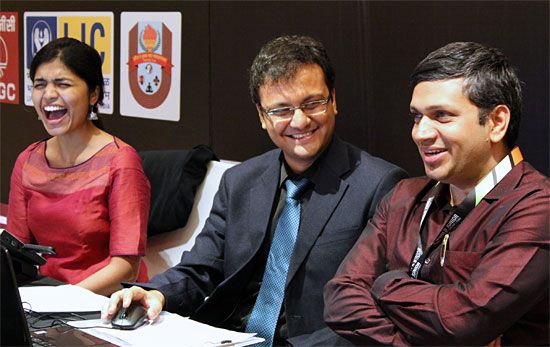A lecture that changed my chess understanding!
The ChessBase India online blitz event is going to be held on 30th of April. In order to celebrate the occasion of 10 years of Kunte's Chess Academy's existence we have a Facebook contest. You have to submit your best chess story, and the winner will get one of his games analyzed by GM Abhijit Kunte in the form of a chess video. In this article we explain to you the procedure of how to take part in the contest. Also, IM Sagar Shah shares with you the experience of how a lecture by GM Jesse Kraai changed his understanding in chess.
In the year 2009 I contacted GM Jesse Kraai for chess training. Jesse is an American grandmaster and a noted author and lecturer. I had subscribed to chesslecture.com and Jesse was one of the lecturers there. Watching through his videos, I was able to deepen my understanding of the game. I loved the way in which he would explain complex concepts in simple words. And we had this common love for Vasily Smyslov. I thanked Jesse in the article that I wrote when I became an IM in 2014.

Coming back to 2009. When I asked Jesse for training he was ready to work with me. However, his fees were something I wasn't able to afford. Being the kind man that he was, he asked me to send a few of my recent games. I was not sure what he was going to do with those games. After a few days I received a mail: "I covered a game of yours at ChessLecture.com: Cl Training guide 2200-2400. I hope you find it instructive and I hope I pronounced your name correctly!"
Although Jesse got my name wrong (Shagar instead of Sagar) what he spoke in the lecture changed my chess understanding by 360 degrees! The game he had chosen for the lecture was my battle against GM Alexander Fominyh. Here is the game (I have kept the annotations as they were annotated by me in 2009):
[Site "Hewlett-Packard"]
[Date "2009.06.10"]
[Round "5"]
[White "Alexander, Fominyh"]
[Black "Sagar, Shah"]
[Result "1/2-1/2"]
[ECO "A30"]
[WhiteElo "2485"]
[BlackElo "2271"]
[Annotator "Sagar Shah"]
[PlyCount "74"]
[SourceDate "2009.03.06"]
[SourceVersionDate "2009.03.06"]
[TimeControl "240+2"]
Bg7 7. Bb2 O-O 8. Nc3 d5 (8... Na6 9. d4 d5 10. dxc5 Nxc5 11. Nxd5 Nxd5 12.
Bxg7 Kxg7 13. cxd5 Qxd5 {with a transposition of moves we arrived at the same
position in the game.}) 9. Nxd5 {actually i was so busy calculating cd5 that i
didnt even consider this move. but actually white doesnt get much more than
equality.} Nxd5 10. Bxg7 Kxg7 11. cxd5 Qxd5 12. d4 {this moves is forced
because without this i will play e5 and have a complete clamp on the position.}
Na6 (12... cxd4 13. Qxd4+ Qxd4 14. Nxd4 Bxg2 15. Kxg2 Na6 $1 {after this move
it seems white cannot anymore claim an advantage.} (15... Nd7 {doesnt keep
control over the b4 square and hence white can always prevent the N from
blocking the c file with b4.}) 16. Rfd1) 13. dxc5 Nxc5 14. Qc2 Rfd8 15. Rfd1
Qc6 {i felt that the best place for the Q is on f6 and hence i simply played
it here so that the queen can go to f6.} 16. b4 Na4 $1 {this is a very
ambitious move based on concrete calculations. i must say that i hadnt worked
out everything but to a certain extent i knew that this move can give me the
advantage} 17. Qb3 (17. Qxc6 Bxc6 18. Rac1 Rxd1+ 19. Rxd1 Nc3 $11) 17... Nc3 $1
18. Rxd8 (18. Nh4 {with this move white threatens to win a piece but black can
wriggle out with exact calculations.} Nxe2+ $1 19. Kf1 (19. Kh1 Qc7 20. Qb2+ {
actually this move had me in a spot of bother but later i realised that Qb7
would come with a check.} Nc3 $1 21. Bxb7 Qxb7+ 22. Kg1 Rxd1+ 23. Rxd1 Qc6 24.
Rc1 Rc8 {and white has no meaningful way of inicreasing the pressure. black is
a pawn up and has got to simply consolidate.}) 19... Qb5 $1 $17 20. Bxb7 Nc1+
$19) 18... Rxd8 (18... Nxe2+ {this is what we analysed after the game.i.e
swapnil, me ,atul, sameer. but i think it leads to a similar position as in
the game but with better chances of drawing for white!!} 19. Kf1 Rxd8 $1 20.
Qxf7+ $1 (20. Kxe2 $2 Ba6+ $1 21. Ke1 Qe4+ 22. Qe3 Qxb4+ {and black has
obvious compensation as the white king is caught in the center} 23. Nd2 Rd6 24.
Qe5+ Kg8 {black has a winning attack.}) 20... Kxf7 21. Ne5+ Ke6 22. Nxc6 Bxc6
23. Bxc6 Rd2 {and now we reach the game position but white has the added
possibility of transposing into a king and pawn ending which is drawn.} 24. Re1
Kd6 25. Rxe2 Rxe2 26. Kxe2 Kxc6 27. a4 a5 28. bxa5 bxa5 29. Kd3 Kc5 30. Kc3 e5
31. f3 h5 32. h4) 19. Qxf7+ {ok i have to tell this that this move was not
seen by me when he played Qb3 and i played Nc3 and after he started to think i
saw this blow but fortunately it works out well for me.} Kxf7 20. Ne5+ Ke6 21.
Nxc6 Bxc6 22. Bxc6 Rd2 $1 {now the a2 and e2 pawns are attacked. if a2 falls
then b pawn will also fall and then black wins. so white saves his a pawn but
he is worse now.} 23. a4 Nxe2+ 24. Kf1 Kd6 25. Bf3 Nc3 {actually this move
might be tactically motivated but the N on c3 is unstable and a lot of such
positions have to do with the superior side maintaing control. if things go
out of control as they do in the game then the team of rook and bishop can be
quite menacing. hence its actually very important to keep the N on a central
square from which it dominates the board. hence the right idea was} (25... Nd4
$1 26. Be4 a6 {immobilizing the b pawn. later black can attack b pawn with Rb2
then defend his N with e5 and play b5.with the N on d4 white is terribly
passive. black is in drivers seat.}) 26. a5 Rb2 (26... Ra2 27. Rc1 Ra3 28. axb6
axb6 29. Kg2 Rb3 30. h4 e5 31. Bb7 e4 32. Rc2) 27. Ra3 {the rook and B start
co-ordinating now. black is hardly better.} Nb5 28. Rd3+ Ke6 29. Bd5+ Ke5 30.
Bc6 $1 Nd4 31. f4+ {i completely overlooked this move in time trouble and now
we reach a rook ending.black has to be better because white king is cut off
but black is insufficent resources to win according to me.} Kd6 32. Rxd4+ Kxc6
33. Re4 {here he offered a draw which i declined!} Kd6 34. axb6 axb6 35. h4 e6
36. Kg1 (36. h5 $5 {this is what sharad tilak suggested. this move is not very
special but logic is very nice. he said that the pawns on h7 and g6 are
impossible for white to attack. but after h5 either g6 pawn will be weak after
hg6 or if gh5 then Re5 followed by Rh5 and the h7 pawn is weak. so exposing
pawn weaknesses is the secret to whites defense here.}) 36... h5 $2 {i think
this is a poor move which weakens the g6 pawn. hence now white gets his chance
to win the g6 and h5 pawns and then its a race. maybe this was required as, if}
(36... Ke7 37. g4 Kf6 {and now i think h5 will be more timely leading to an
entry for black king} 38. Kh1 h5 39. gxh5 gxh5 40. Re5 Rxb4 41. Rxh5 Rxf4 42.
Rb5 $11) 37. Re5 {here i offered a draw which he instantly accpeted which
makes me feel that this position is somewhat better for me. IM sharad tilak
was quite sad that i accpeted a draw here. he said that even if i gave up the
the g6 and h5 pawn i cannot lose.} -- (37... Rxb4 38. Rg5 (38. Kg2 {i think
this is an improvement because g6 pawn is already doomed and white king is
activated.}) 38... Rb2 39. Rxg6 b5 40. Rg5 b4 41. Rxh5 b3 42. Rb5 Ke7 {and
even though black is a pawn down without the king ,white cannot win.but i dont
think even black can win.}) 1/2-1/2
One of the variations in my annotations had caught Jesse's attention.

Kraai disagreed with my evaluation and said in his lecture - "When the pawn structure is symmetrical, what counts for an advantage is activity. In this position White's knight is clearly more active than Black's. Also it is White to play and hence he can surely claim a small advantage." He went on to show one of Smyslov's masterpieces in this position. I recommend you to go through this game very carefully to understand how to play in symmetrical positions.
[Site "Monte Carlo"]
[Date "1969.04.02"]
[Round "3"]
[White "Smyslov, Vassily"]
[Black "Benko, Pal C"]
[Result "1-0"]
[ECO "A30"]
[PlyCount "67"]
[EventDate "1969.??.??"]
[EventType "tourn"]
[EventRounds "11"]
[EventCountry "MNC"]
[SourceTitle "MCD"]
[Source "ChessBase"]
[SourceDate "1999.07.01"]
[SourceVersion "1"]
[SourceVersionDate "1999.07.01"]
[SourceQuality "1"]
d5 9. Nxd5 Nxd5 10. Bxg7 Kxg7 11. cxd5 Qxd5 12. d4 cxd4 13. Qxd4+ Qxd4 14. Nxd4
Bxg2 15. Kxg2 Rc8 16. Rac1 Nd7 17. Rfd1 Nc5 18. b4 Na4 19. Nb5 Rxc1 20. Rxc1 a5
21. a3 Rd8 22. Rc7 Rd5 23. Na7 axb4 24. axb4 e6 25. Nc6 Rd2 26. Ne5 Rxe2 27.
Nxf7 h5 28. Ng5+ Kf6 29. Kf1 $1 Rxf2+ 30. Kxf2 Kxg5 31. Ke3 Kg4 32. b5 Kh3 33.
Rc4 Nb2 34. Rc2 1-0

No longer were symmetrical positions boring. I must say that my subsequent score in symmetrical pawn structure positions was quite good. It was only because of this lecture that I dug deep into the subject and managed to improve my understanding. You can say that, that one lecture helped me to become a stronger player.
A lecture that can improve your understanding!
You might be aware that ChessBase India is conducting an online blitz prize money tournament to celebrate 10 years of Kunte's Chess Academy. Of course there are cash prizes of Rs.40,000 to be won at the event, with the first place of Rs.11,111. In addition to that we also have a Facebook contest. The winner of the contest will get a chance to send in his game to ChessBase India which will be analyzed by GM Abhijit Kunte in a video.

So what exactly is to be done? Well, all you have to do is share with us one of your most interesting experiences in chess. A story that you would like to share with other people. Here's a 2 minute video that explains the contest to you:
How do you share your story with us?
You could write your story in the comments section of the Facebook post above, or you could send us a message on ChessBase India's Facebook page. Alternatively you could also send us your story on chessbaseindia@gmail.com
Prizes:
The first three best stories get the following prizes:
1. Your game annotated by GM Abhijit Kunte + A Fritztrainer DVD of your choice from the ChessBase India shop worth Rs.999/-
2. A Fritztrainer DVD of your choice from ChessBase India shop worth Rs.999/-
3. Six months ChessBase Premium Account worth Rs. 750/-
Important condition:
You have to be a participant of the online blitz tournament in order to take part in the contest. You can take part in the blitz tournament from here:
http://kunteonline.chessbase.in/kunte-online
Already nine grandmasters have confirmed their participation including India number three B.Adhiban. Don't miss your chance to have eleven rounds of fun.

When Jesse Kraai analyzed my game little did I know that it would impact me and my chess understanding in such a big way. This is your chance to submit your best story, win the first place and get your game annotated by the former Commonwealth and two time National Champion!

